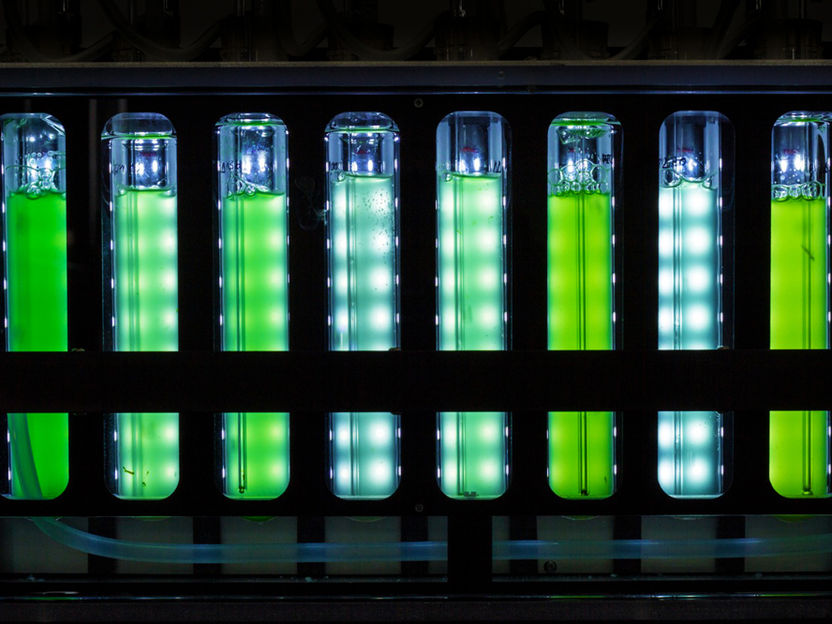How to Reprogram Memory Cells in the Brain
Neuroscientists reprogram brain cells to investigate how place memories are formed
Long-term memory of specific places is stored in the brain in so-called place cells. A team of neuroscientists headed by Dr Andrea Burgalossi of the University of Tübingen’s Werner Reichardt Centre for Integrative neuroscience (CIN) have now ‘reprogrammed’ such place cells in free-roaming mice, by sending electrical impulses directly to individual neurons. After stimulation, these cells were ‘reprogrammed’ in that their place-related activity switched to the location where the stimulation was performed.

"Route is being recalculated due to lightning strike": Place cells in the hippocampus are thought to be part of an internal “GPS system” that keeps track of our position in space. Stimulation with small electrical discharges can reprogram them.
Shimpei Ishiyama
How do we know what happened to us yesterday, or last year? How do we recognize places we have been, people we have met? Our sense of past, which is always coupled with recognition of what is currently present, is probably the most important building block of our identity. Moreover, from not being late for work because we could not remember where the office was, to knowing who our friends and family are, long-term memory is what keeps us functional in our daily lives.
It is therefore not surprising that our brain relies on some very stable representations to form long-term memories. One example are memories of places we have seen. To each new place, our brain matches a subset of neurons in the hippocampus (a centrally located brain area crucial to memory formation): place cells. The memory of a given environment is thought to be stored as a specific combination of place-cell activity in the hippocampus: the place map. Place maps remain stable as long as we are in the same environment, but reorganize their activity patterns in different locations, creating a new place map for each environment.
To date, the mechanisms which underlie this reorganization of place cell activity have remained largely unexplored. In 2016, Tübingen neuroscientists headed by Dr Andrea Burgalossi had shown that silent, dormant cells can be activated by electrical stimulation and become active place cells in the rat brain. Building upon this work, the team has continued investigating the ways place cells are formed and have now presented evidence that place cells are not nearly as stable as had been thought: they can, in fact, even be ‘reprogrammed’.
The setup, which is unique in the world, uses juxtacellular recording and stimulation – a method where a hair-fine electrode measures and induces the tiny currents along individual place cells – in live animals freely roaming an arena in the lab. With this setup, the researchers targeted individual place cells in a mouse’s brain and stimulated them in a different location from where they had origi-nally been active. In a significant number of cases, they found that the activity of the place cells could be ‘reprogrammed’: the cells stopped firing in the original locations, and became active in the area where the electrical stimulation was delivered. In other words, the reprogrammed place cells would, from now on, become active whenever the mouse wandered to the stimulus location, but remain silent in the old location.
“We challenged the idea that place cells are stable entities. Even in the same environment, we can reprogram individual neurons by stimulating them at specific places”, says Andrea Burgalossi. “This finding provides insights into the basic mechanisms that lead to the formation of new memories”. In the near future, the scientists hope to be able to reprogram multiple neurons simultaneously, so to test the plasticity of place maps as a whole. “So far, we have reprogrammed single neurons, and it would be fascinating to find what influence this has on place maps as a whole. We would very much like to know what is the minimum number of cells we need to reprogram in order to modify an actual memory trace in the brain.”
Original publication
Maria Diamantaki, Stefano Coletta, Khaled Nasr, Roxana Zeraati, Sohie Laturnus, Philipp Berens, Patricia Preston-Ferrer, Andrea Burgalossi; "Manipulating Hippocampal Cell Activity by Single-Cell Stimulation in Freely-Moving Mice"; Cell Reports (im Druck), 3. April 2018.























































